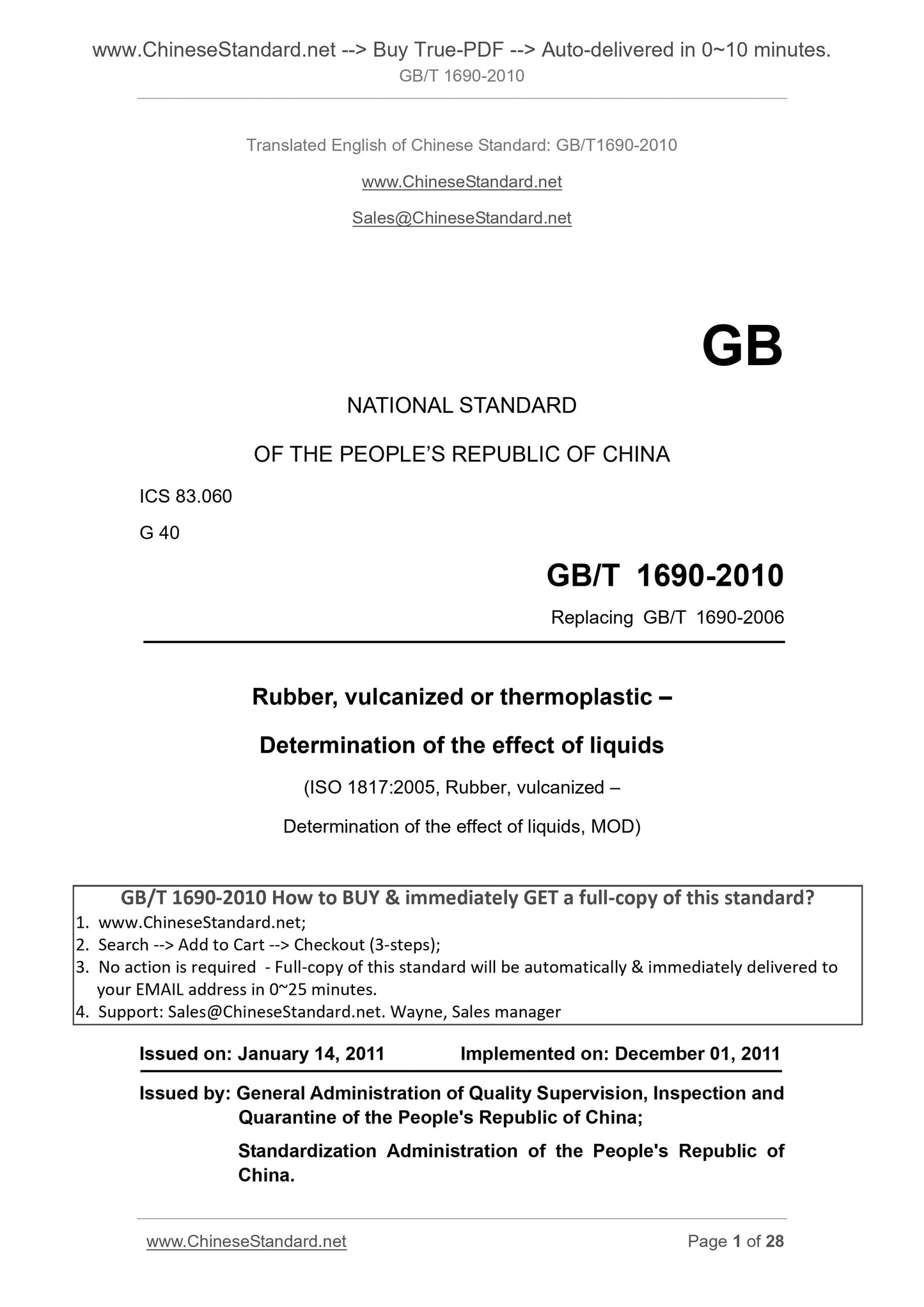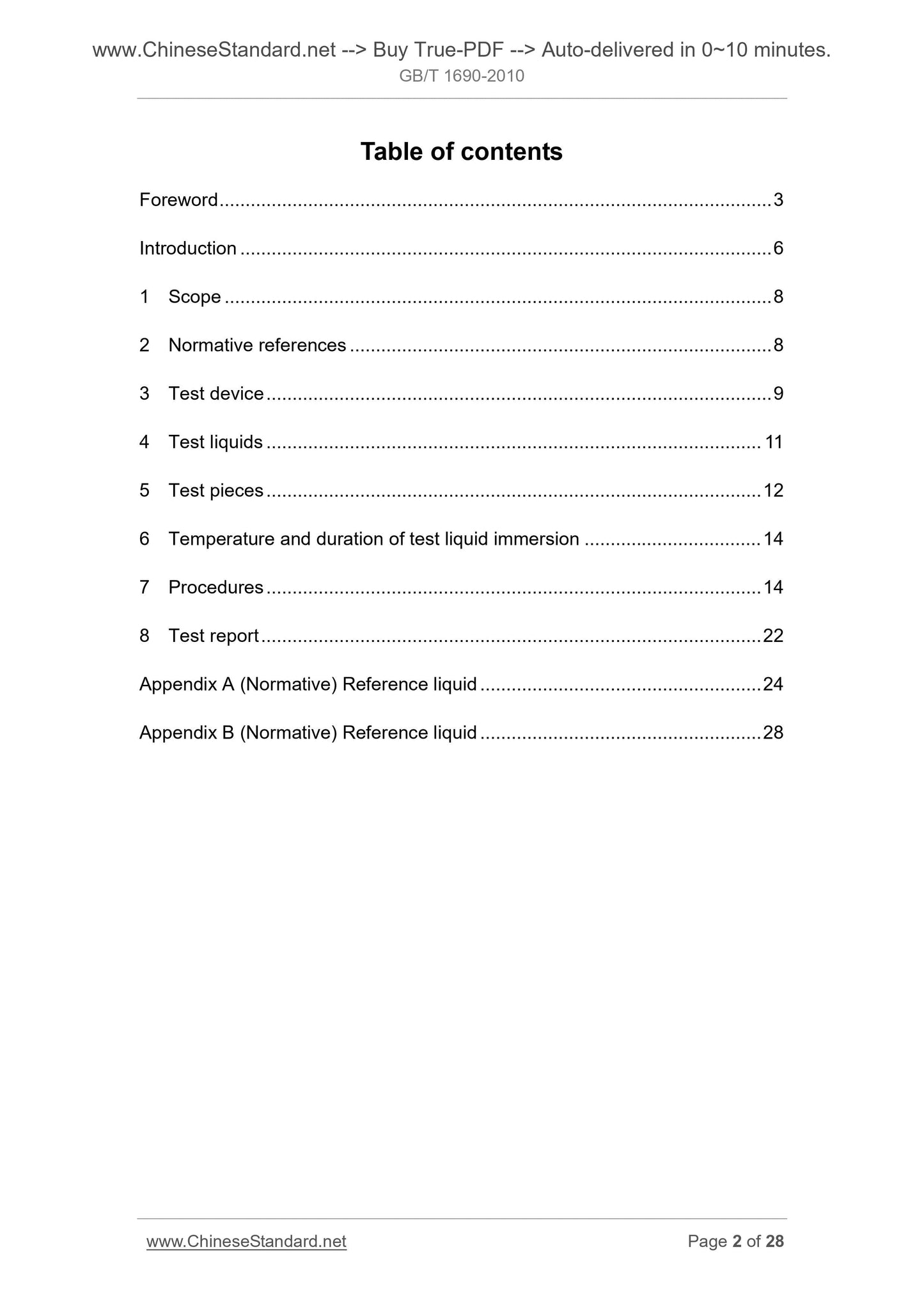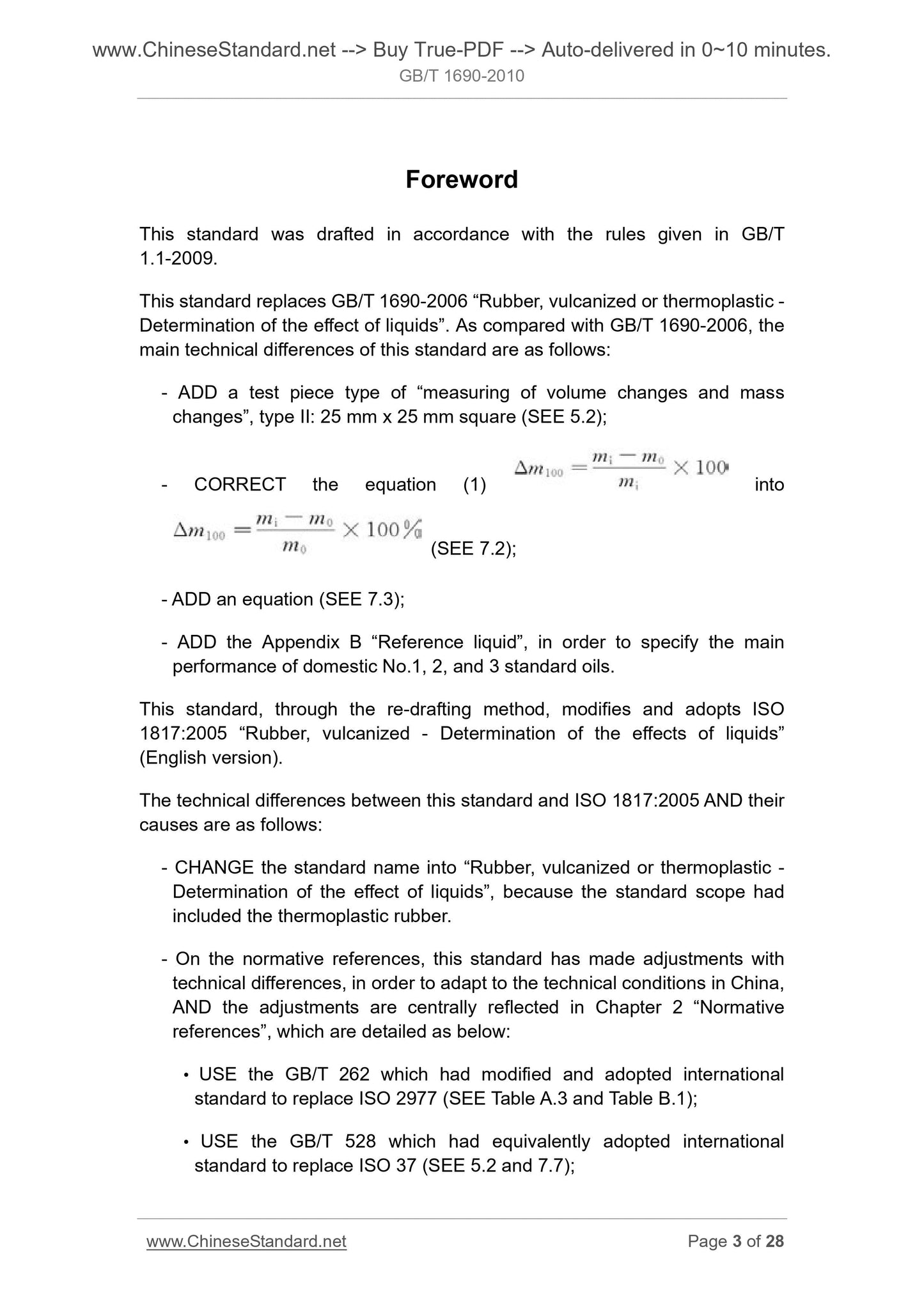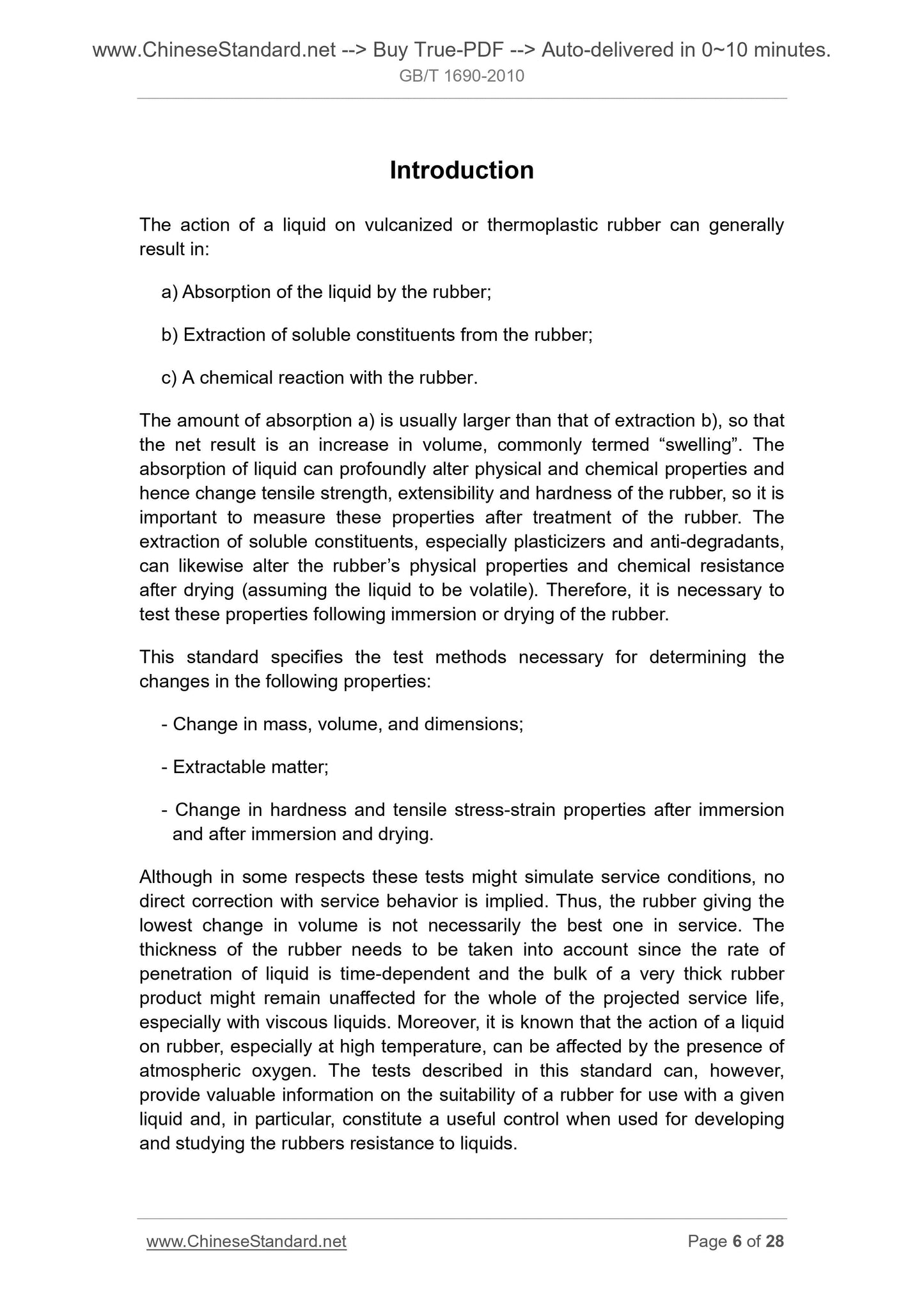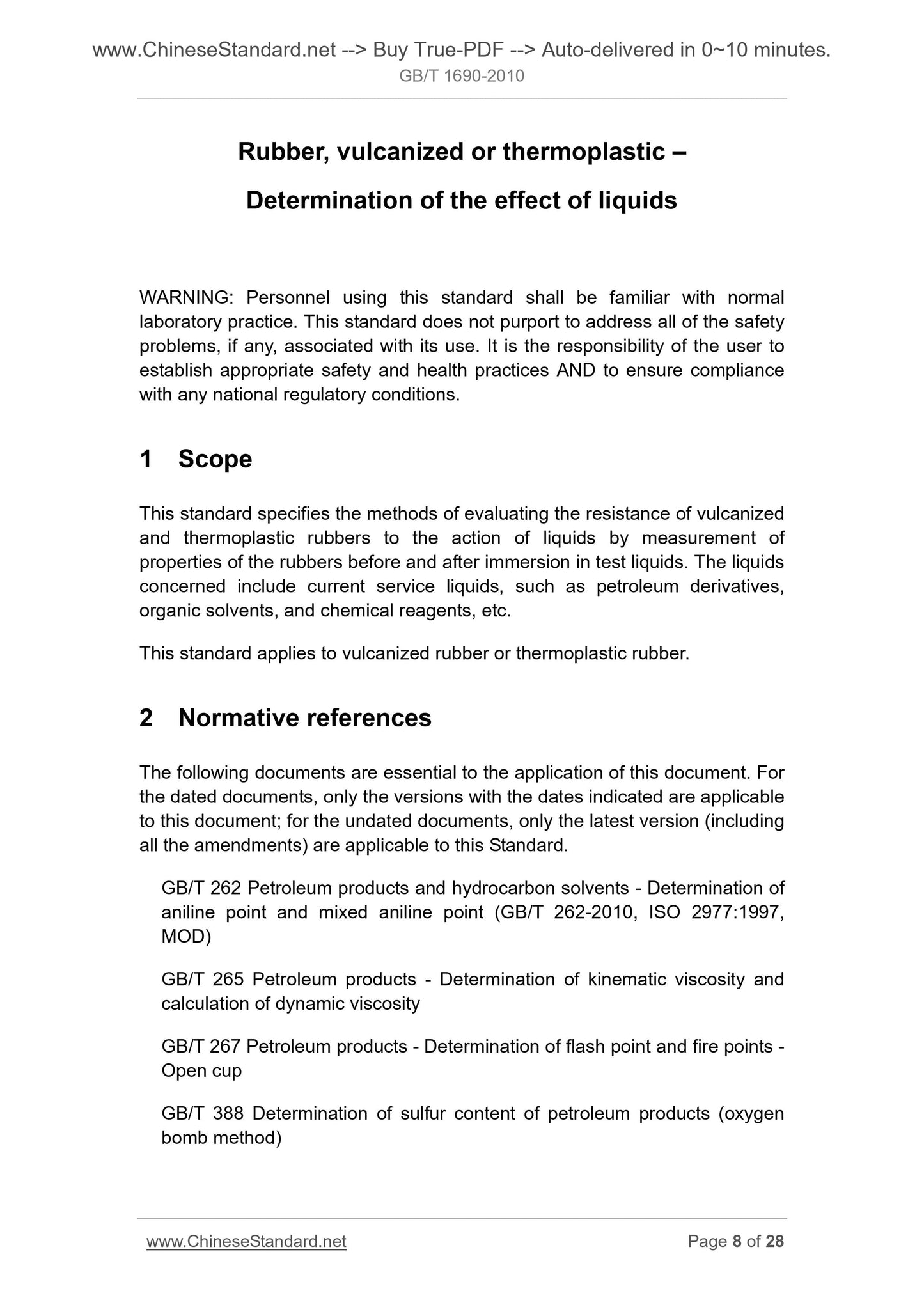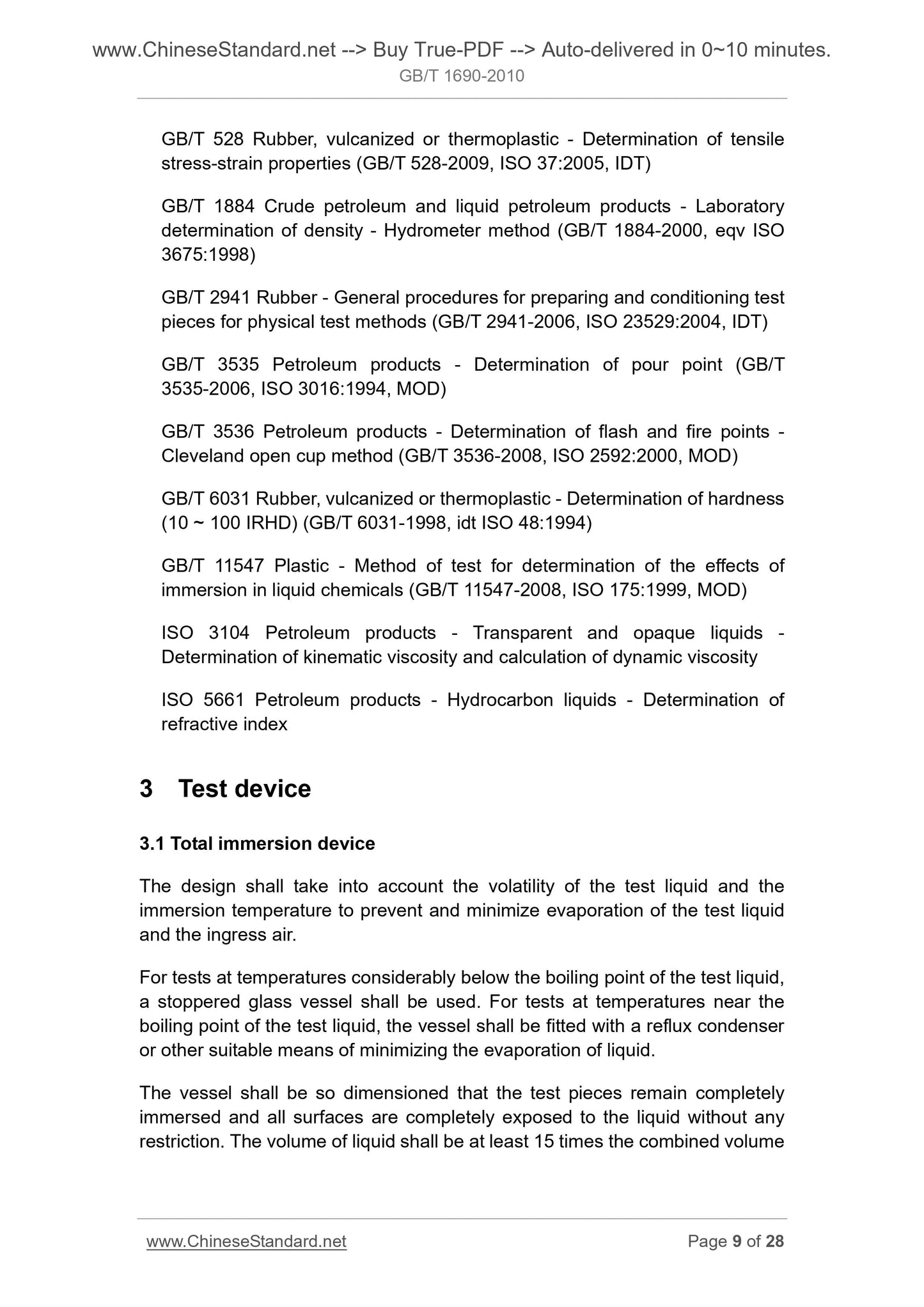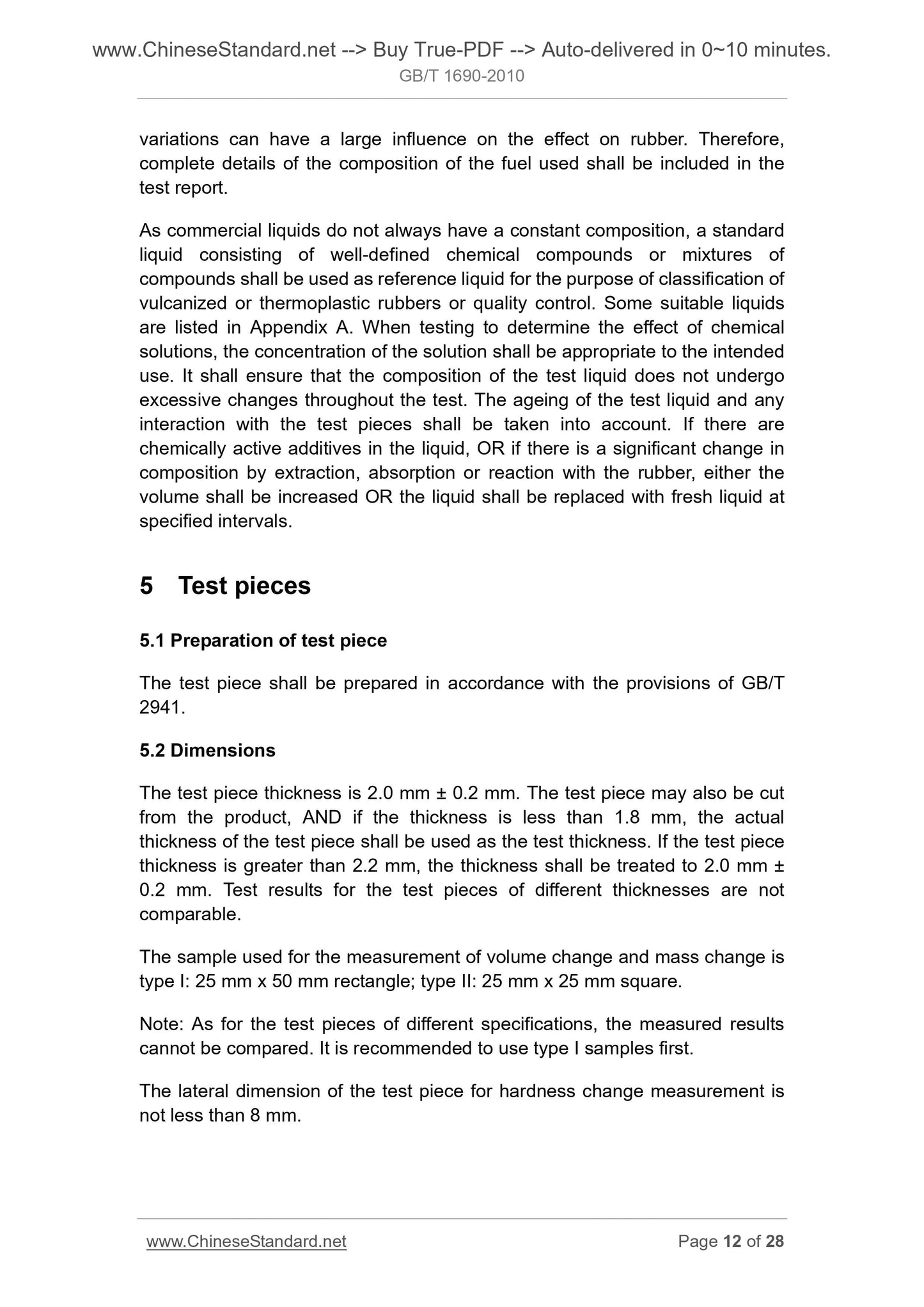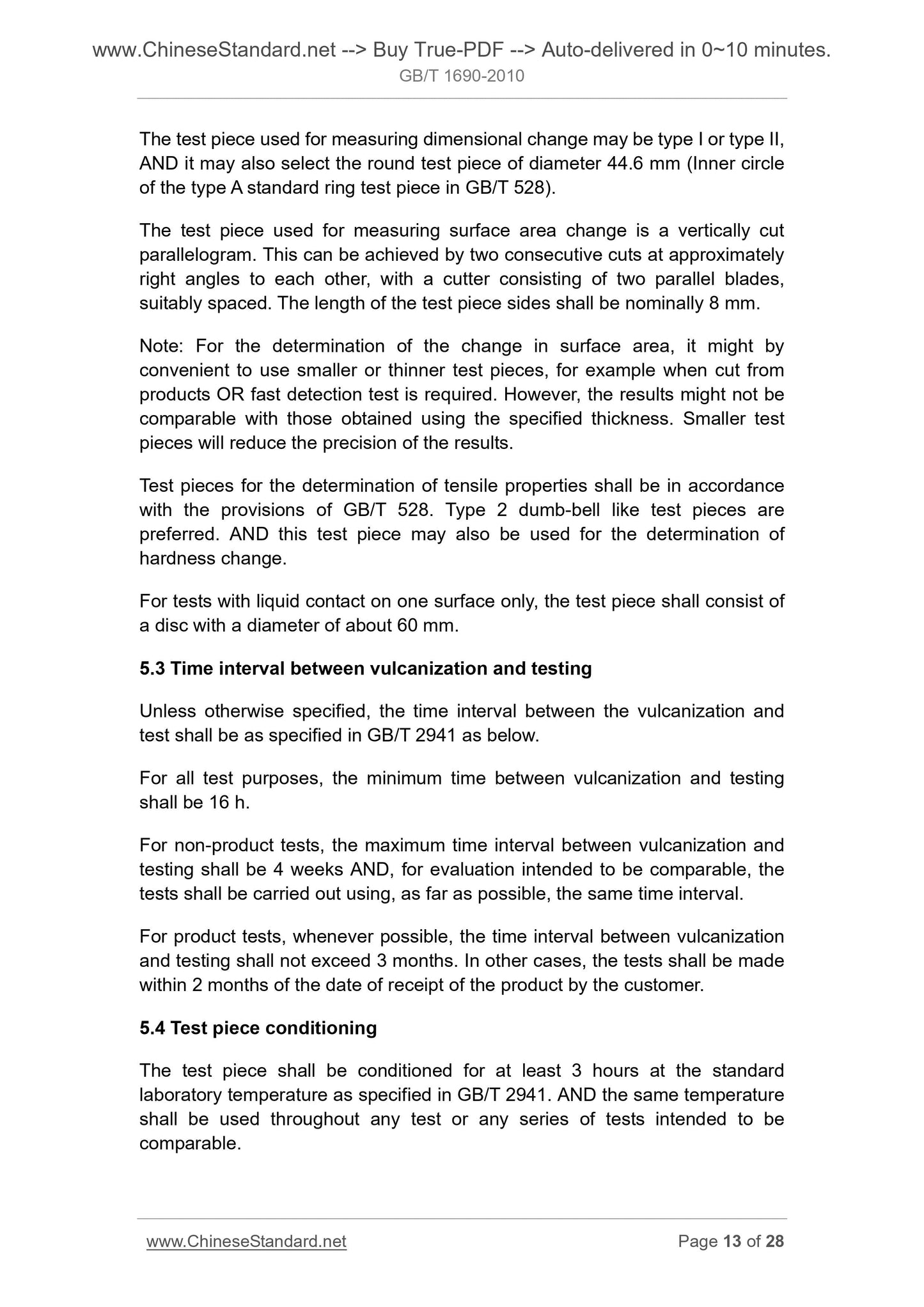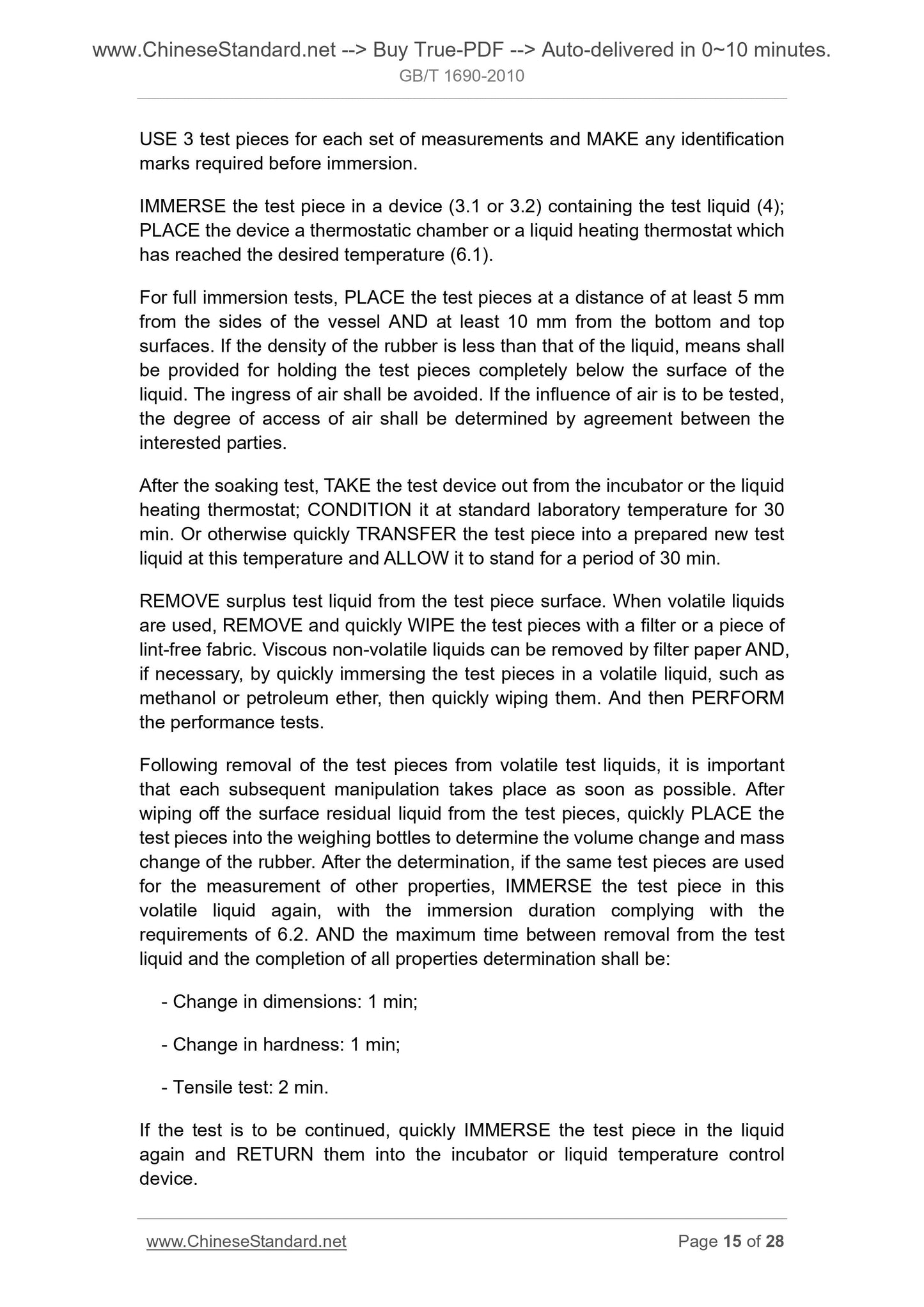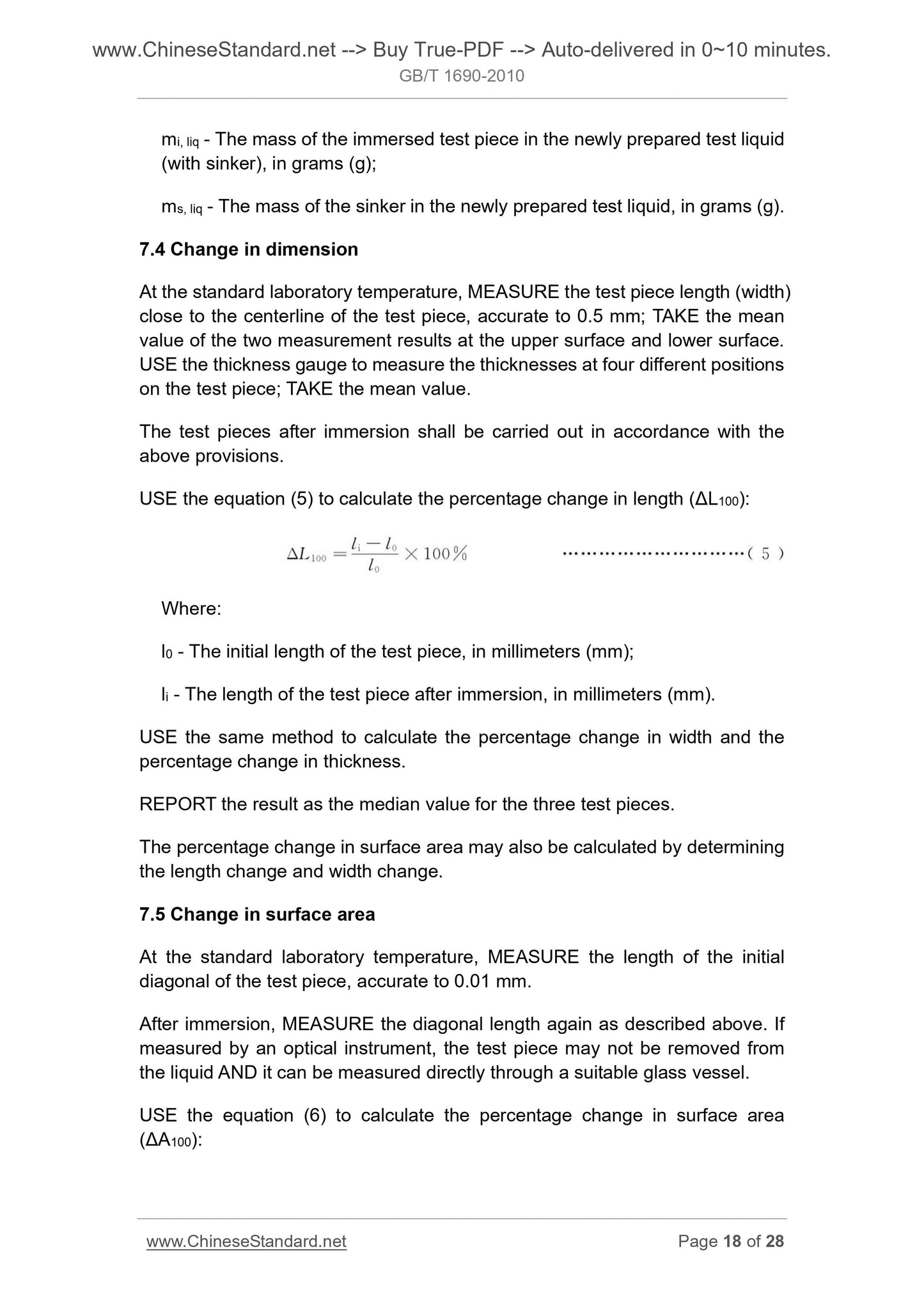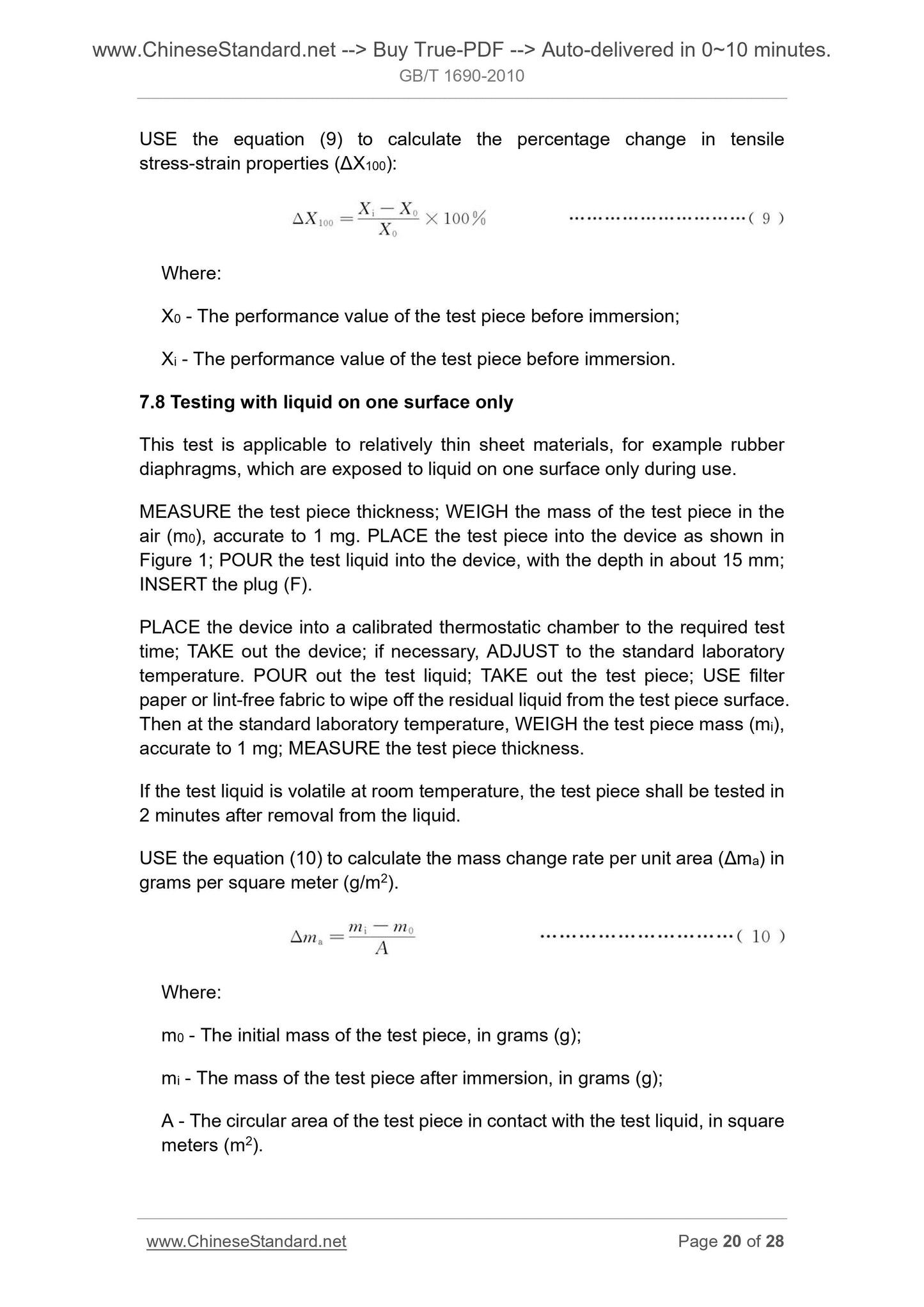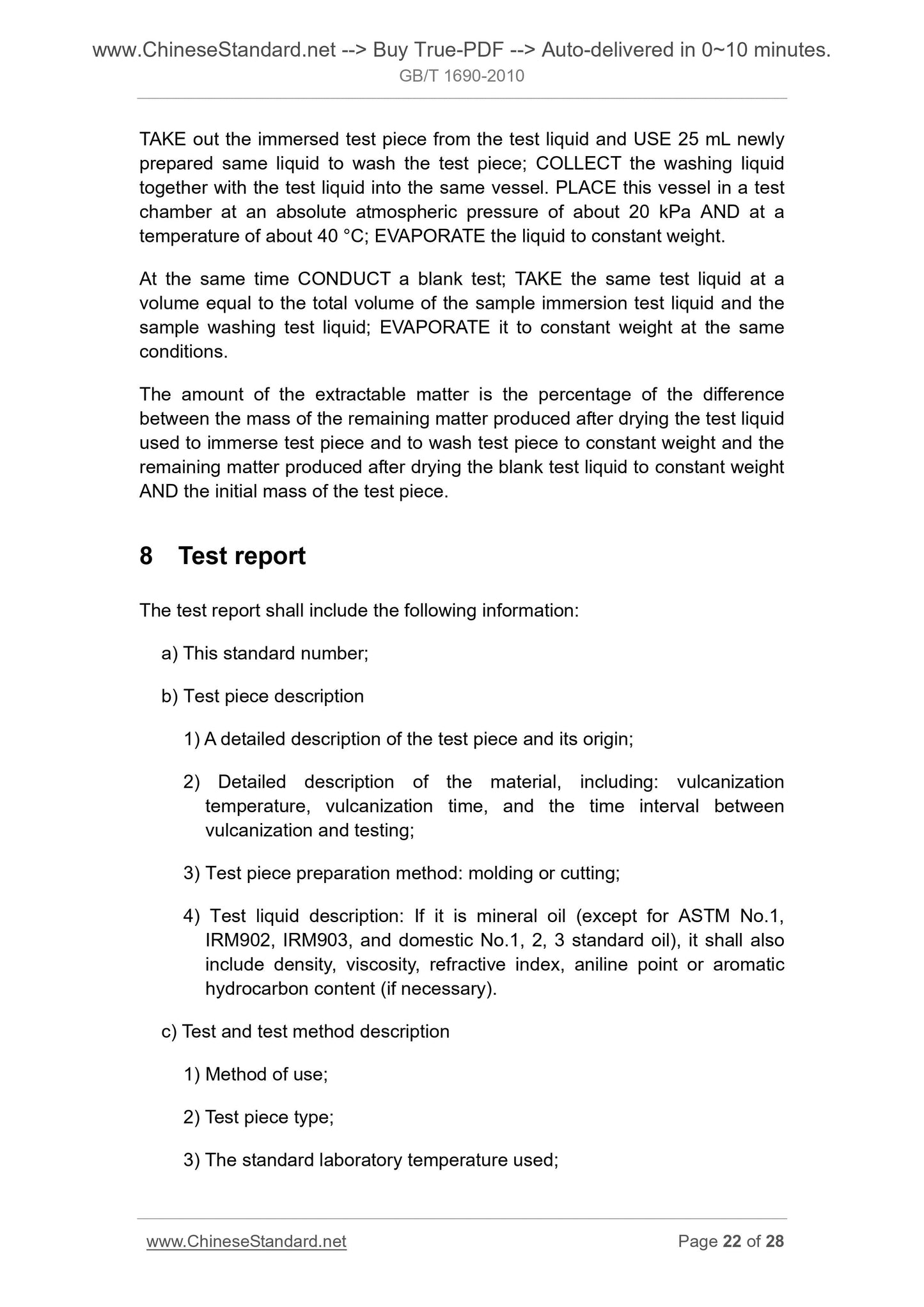1
/
of
12
www.ChineseStandard.us -- Field Test Asia Pte. Ltd.
GB/T 1690-2010 English PDF (GB/T1690-2010)
GB/T 1690-2010 English PDF (GB/T1690-2010)
Regular price
$85.00
Regular price
Sale price
$85.00
Unit price
/
per
Shipping calculated at checkout.
Couldn't load pickup availability
GB/T 1690-2010: Rubber, vulcanized or thermoplastic -- Determination of the effect of liquids
Delivery: 9 seconds. Download (and Email) true-PDF + Invoice.Get Quotation: Click GB/T 1690-2010 (Self-service in 1-minute)
Newer / historical versions: GB/T 1690-2010
Preview True-PDF
Scope
This standard specifies the methods of evaluating the resistance of vulcanizedand thermoplastic rubbers to the action of liquids by measurement of
properties of the rubbers before and after immersion in test liquids. The liquids
concerned include current service liquids, such as petroleum derivatives,
organic solvents, and chemical reagents, etc.
Basic Data
| Standard ID | GB/T 1690-2010 (GB/T1690-2010) |
| Description (Translated English) | Rubber, vulcanized or thermoplastic -- Determination of the effect of liquids |
| Sector / Industry | National Standard (Recommended) |
| Classification of Chinese Standard | G40 |
| Classification of International Standard | 83.060 |
| Word Count Estimation | 18,180 |
| Date of Issue | 2011-01-14 |
| Date of Implementation | 2011-12-01 |
| Older Standard (superseded by this standard) | GB/T 1690-2006 |
| Quoted Standard | GB/T 262; GB/T 265; GB/T 267; GB/T 388; GB/T 528; GB/T 1884; GB/T 2941; GB/T 3535; GB/T 3536; GB/T 6031; GB/T 11547; ISO 3104; ISO 5661 |
| Adopted Standard | ISO 1817-2005, MOD |
| Regulation (derived from) | National Standard Approval Announcement 2011 No.2 (Total No.167) |
| Issuing agency(ies) | General Administration of Quality Supervision, Inspection and Quarantine of the People's Republic of China, Standardization Administration of the People's Republic of China |
| Summary | This standard specifies the test before granting foam rubber in the test liquid, changing the performance evaluation of the role of liquid rubber. Test liquids include standard test liquids and similar petroleum derivatives, organic solvent, chemical reagents. This standard applies to vulcanized rubber or thermoplastic rubber. |
Share
